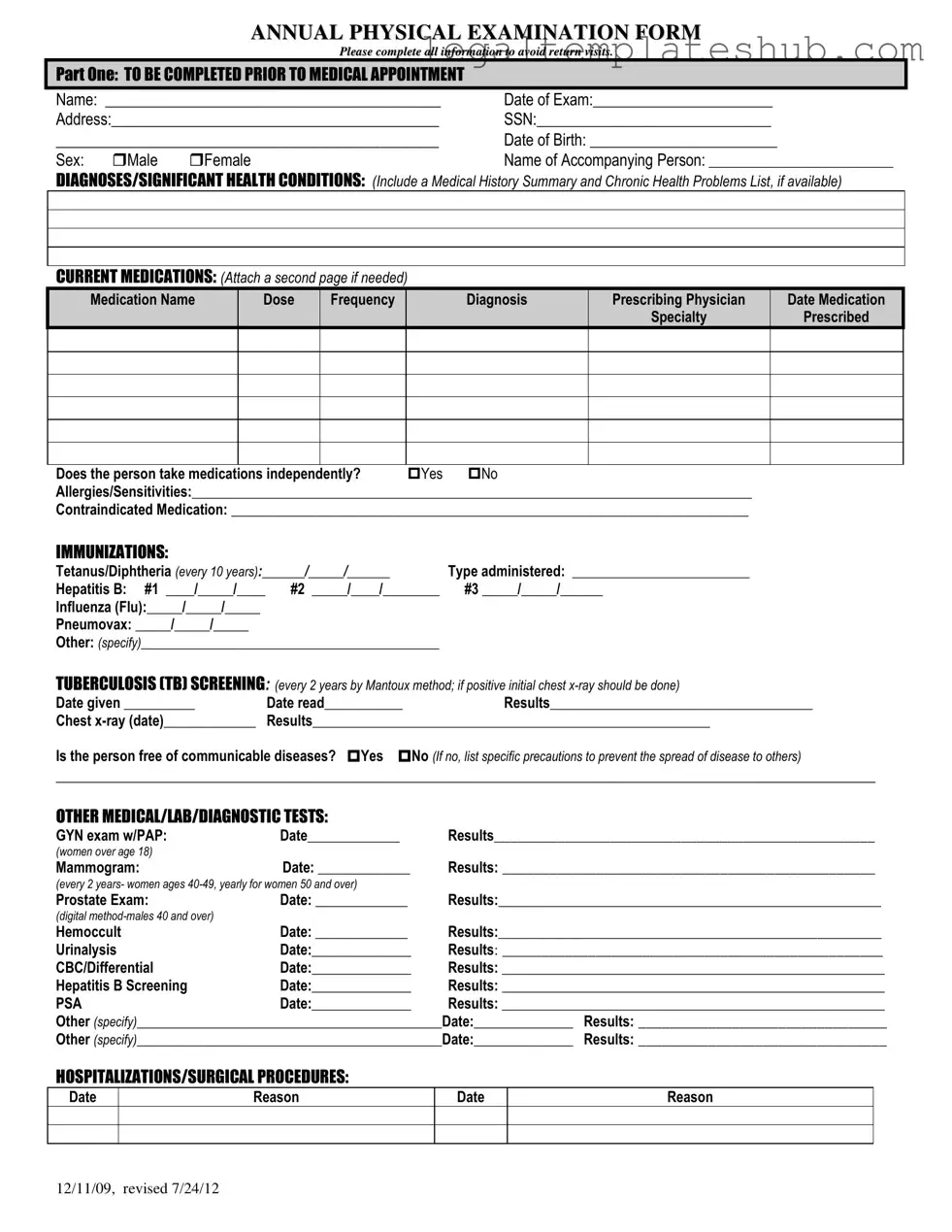Blank Annual Physical Examination PDF Form
The Annual Physical Examination Form is a comprehensive document designed to gather essential health information before a medical appointment. It helps ensure that healthcare providers have all necessary details to deliver the best care possible. Completing this form accurately can minimize the need for return visits, enhancing the efficiency of your healthcare experience.
Take a moment to fill out the form by clicking the button below.
Access Editor
